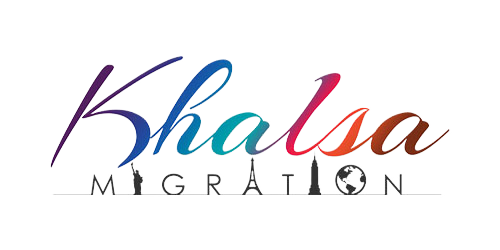The Disconnect Between Quality and Risk Classification
The recent release of updated risk levels for education providers has sent ripples across Australia's international education landscape, with particular implications for vocational education and training providers. As RTOs prepare for the July 2025 standards implementation, understanding the impact of these risk classifications becomes increasingly important for strategic planning and compliance management. Auditors may evaluate how effectively providers are navigating these risk frameworks while maintaining quality educational delivery and appropriate student support services despite the challenges they present.
The current risk assessment framework has generated significant sector concern due to its primary focus on immigration outcomes rather than educational quality or compliance practices. This creates a fundamental disconnect where providers delivering excellent educational experiences may nonetheless receive unfavourable risk ratings due to visa processing outcomes largely beyond their control. The classification methodology under the Simplified Student Visa Framework (SSVF) weights several factors: offshore visa refusals due to fraud (40%), visa refusals for non-fraud reasons (10%), onshore visa cancellations (25%), overstayers (15%), and subsequent protection visa applications (10%).
This weighting system means providers can face substantial risk rating consequences from visa outcomes that may reflect broader immigration policy shifts, changing processing approaches, or applicant misrepresentation rather than institutional quality issues. For vocational education providers, this creates particular challenges when developing international student recruitment strategies that must simultaneously address educational quality standards, compliance requirements, and risk rating implications that may operate on entirely different assessment logics.
The recent update has produced mixed results across the sector, with some providers seeing improvements while others experienced unexpected downgrades that create significant operational implications. Reports indicate that approximately 11 Australian universities and up to 100 colleges have had their risk ratings downgraded following increased visa rejections, creating substantial challenges for their international student recruitment efforts and administrative processes.
The Package Course Conundrum
A particularly problematic aspect of the current risk rating system involves its treatment of package course arrangements—a common pathway for international students entering Australian vocational education. When students apply for visas covering multiple providers (such as ELICOS followed by VET qualifications), visa rejections potentially impact the risk ratings of all providers listed in the application, regardless of which provider's documentation or processes may have contributed to the rejection decision.
This creates a troubling situation where providers may face risk rating consequences for admissions decisions, document verification approaches, or application management practices completely outside their control. For example, an ELICOS provider maintaining rigorous verification procedures may nonetheless experience risk rating declines due to VET provider practices with whom their students subsequently enrol. Conversely, VET providers may face consequences from ELICOS provider admission decisions regarding students who haven't yet commenced vocational studies.
This interdependence creates problematic incentive structures that may discourage package course arrangements despite their educational value in providing language foundations before vocational study. Some providers report increasing reluctance to participate in package course arrangements due to the inability to control risk rating implications, potentially reducing pathway opportunities for international students requiring language preparation before vocational study.
For vocational education providers, this aspect of the risk rating system creates particular strategic challenges when developing educational pathways and partnership arrangements with language providers. When auditors evaluate international student management under the 2025 standards, understanding these complex risk rating implications may provide important context for evaluating provider strategic decisions regarding educational pathways and international student support.
The Shifting Visa Landscape
The risk rating challenges facing vocational providers exist within a broader context of significant change and uncertainty in Australia's student visa landscape. Recent data indicates substantial shifts in visa processing approaches and outcomes, with September 2023 reportedly seeing the lowest visa approval rate on record at just 66.4% across all applications. This decline appears to reflect broader policy shifts regarding international education rather than changes in applicant quality or provider practices.
These visa processing shifts demonstrate notable inconsistency, with providers reporting that similar applications might receive entirely different outcomes depending on timing. Applications that would likely have been approved six months earlier now face rejection despite no material changes in documentation, applicant profile, or provider circumstances. This inconsistency creates significant planning challenges for providers attempting to develop appropriate admissions approaches aligned with visa requirements.
The country-specific risk tiering system further complicates provider planning, with current high-risk (Level 3) designations including major source countries like India, Pakistan, and Nepal. Students from these countries face stricter requirements, including mandatory English proficiency tests and extended proof of financial capacity. These requirements create additional barriers that may redirect students toward alternative destination countries regardless of the quality or relevance of Australian educational offerings.
For vocational education providers, these visa landscape shifts create substantial strategic planning challenges when developing international recruitment approaches. Markets that previously represented reliable student sources may suddenly become highly problematic from a risk rating perspective, despite no changes in the actual quality or relevance of students from those regions. When evaluating international student management approaches under the 2025 standards, understanding these external policy shifts may provide important context for assessing provider recruitment strategies.
Regulatory Focus Areas
The Australian Skills Quality Authority (ASQA) has demonstrated increased regulatory focus on specific vocational qualifications with high international student participation, creating additional compliance considerations for providers offering these programs. Qualifications receiving particular scrutiny include:
-
CHC33015 – Certificate III in Individual Support
-
CHC50121 – Diploma of Early Childhood Education and Care
-
CHC30121 – Certificate III in Early Childhood Education and Care
-
CHC43015 – Certificate IV in Ageing Support
-
CHC52015 – Diploma of Community Services
-
RII60520 – Advanced Diploma of Civil Construction Design
Providers offering these qualifications report experiencing higher thresholds for CRICOS registration and increased regulatory attention regarding international student management. This targeted scrutiny reflects broader concerns about potential exploitation of the visa system and insufficient educational or employment outcomes for international students in these qualification areas.
Additionally, ASQA participates in multi-agency efforts addressing exploitation concerns, including collaboration with immigration authorities targeting potentially problematic recruitment practices or educational arrangements. These regulatory activities represent legitimate quality assurance efforts but create additional complexity when combined with risk rating systems primarily focused on immigration outcomes rather than educational quality.
For vocational education providers offering these high-scrutiny qualifications, the combination of risk rating pressures and targeted regulatory attention creates multi-dimensional compliance challenges requiring sophisticated management approaches. When developing international student recruitment strategies, providers must simultaneously address both immigration risk factors and specific qualification-related regulatory concerns that may operate on different assessment logics.
Impact on Provider Operations
The current risk level framework and visa processing environment create significant operational impacts for vocational education providers attempting to maintain quality international programs. These impacts extend across multiple operational domains from recruitment planning to student support services and financial sustainability.
Recruitment Uncertainty
Perhaps the most immediate operational impact involves increasing uncertainty in recruitment planning and admissions decision-making. With visa approval rates fluctuating significantly and risk rating consequences potentially arising from factors outside provider control, developing appropriate admissions criteria becomes increasingly challenging. Providers report growing reluctance to issue Confirmation of Enrolment (CoE) letters due to uncertainty regarding visa approval likelihood, creating enrollment pipeline disruptions regardless of student quality or program suitability.
This uncertainty extends to agent relationships, with providers facing difficult decisions regarding continued work with agents in higher-risk markets despite potentially strong educational matching between students and programs. Some providers report reducing or eliminating recruitment from certain regions despite strong program demand and student quality due to risk rating concerns, potentially undermining both student opportunity and provider program viability.
For vocational education providers, these recruitment challenges require increasingly sophisticated approaches to applicant evaluation, balancing educational suitability, compliance requirements, and risk rating implications. When auditors evaluate international student management under the 2025 standards, evidence of such balanced approaches may demonstrate particular provider sophistication in navigating complex recruitment environments.
Compliance Burden Escalation
The risk rating system creates substantially different administrative and compliance requirements based on provider classification. Providers attracting students primarily from low-risk (Level 1) countries benefit from streamlined visa processing and reduced administrative burdens, while those with students from higher-risk countries face increased documentary requirements, verification expectations, and processing scrutiny regardless of individual provider compliance history or quality assurance practices.
This differential burden creates potential feedback loops where providers with favourable risk ratings can operate more efficiently while those with challenging ratings face increasing administrative requirements that may further impact operational effectiveness. Over time, these differentials potentially create market concentration as students and agents increasingly favour providers with the most streamlined processes, regardless of educational quality or program suitability.
For vocational education providers, these escalating compliance burdens require careful resource allocation to maintain both educational quality and necessary verification processes. When evaluating compliance approaches under the 2025 standards, understanding these differentiated administrative requirements may provide important context for assessing provider documentation and verification practices.
Financial Viability Pressures
The combined impact of risk rating consequences, visa uncertainty, and market limitations creates significant financial pressures for many providers. Unexpected risk rating downgrades can substantially impact enrollment pipelines developed through considerable marketing investment, potentially creating sudden revenue shortfalls requiring rapid operational adjustments. Similarly, increasing visa refusal rates represent lost revenue from students who have completed the admissions process but cannot commence studies.
These financial pressures potentially impact educational quality through necessary cost-saving measures, creating challenging tensions between maintaining program standards and addressing revenue shortfalls. Providers report difficult decisions regarding staffing levels, support services, and facility investments necessitated by revenue uncertainty despite a commitment to maintaining quality educational experiences.
For vocational education providers, these financial viability challenges require increasingly sophisticated contingency planning and diversification strategies. When auditors evaluate financial viability under the 2025 standards, understanding these external pressures may provide important context for assessing provider financial management approaches and risk mitigation strategies.
Student Experience Considerations
Beyond institutional impacts, the current risk level system and visa processing environment create significant challenges for international students attempting to access Australian vocational education. These challenges extend from application processes through arrival planning and potentially affect educational experiences and outcomes.
Application Financial Risk
International students face substantial financial commitment when applying for Australian student visas, with application fees exceeding AUD $710 plus payment processing charges. These fees represent non-recoverable expenses regardless of application outcome, creating significant financial risk for applicants from developing economies. When visa refusal rates increase substantially, these financial losses affect thousands of potential students who may have invested considerable resources in preparing for Australian education.
This financial risk extends beyond direct application fees to include English testing costs, document preparation expenses, and agent fees that students may have incurred during the application process. The cumulative financial impact potentially affects students' future educational opportunities by depleting resources that might otherwise support alternative study pathways following visa refusal.
For vocational education providers, these student financial risks create ethical considerations regarding admissions processes and expectations setting. When evaluating student welfare approaches under the 2025 standards, evidence of transparent communication regarding visa risks and requirements may demonstrate particular provider commitment to ethical recruitment practices.
Planning Uncertainty and Alternative Destinations
Extended visa processing times and increasing refusal rates create significant planning uncertainty for international students, who typically need to make life-changing decisions regarding accommodation, employment, and family arrangements based on anticipated study commencement. When visa outcomes become increasingly unpredictable, this planning becomes exceptionally difficult, creating stress and potential financial losses even for students who eventually receive approvals.
This uncertainty reportedly contributes to increasing consideration of alternative study destinations with more predictable visa processes, including options like Canada, the UK, or even Australian institutions operating offshore campuses. Students and agents increasingly factor visa predictability alongside educational quality and cost considerations when making study destination choices, potentially redirecting qualified applicants away from Australian institutions regardless of program quality or suitability.
For vocational education providers, these student planning challenges create important considerations regarding application timing, communication approaches, and support services. When evaluating international student management under the 2025 standards, evidence of strategies addressing these planning uncertainties may demonstrate particular provider commitment to student welfare throughout the enrollment process.
Strategic Response Options
While the current risk rating system presents significant challenges, vocational education providers can implement several strategic approaches to navigate this complex environment while maintaining educational quality and operational sustainability. These strategies represent potential pathways for addressing immediate challenges while advocating for longer-term system improvements.
Enhanced Application Verification
Given the substantial risk rating impact of fraudulent applications (40% weighting), implementing comprehensive document verification and applicant screening processes represents an essential foundation for risk management. Effective approaches typically include systematic academic document verification through official portals, financial documentation assessment for consistency and authenticity, and structured interview processes evaluating genuine student intentions.
These verification processes should incorporate awareness of common red flags, including age-course misalignment, qualification-course disconnection, short program selection, identical statements of purpose across multiple applicants, or unusual financial sponsorship arrangements. Systematic documentation of verification steps creates both risk mitigation and evidence trails supporting provider diligence if visa refusals nonetheless occur.
For vocational education providers, these verification approaches require reasonable resource allocation while avoiding unnecessary barriers for legitimate applicants. When auditors evaluate international student management under the 2025 standards, evidence of balanced verification systems may demonstrate particular provider sophistication in addressing compliance requirements while maintaining accessibility for qualified students.
Agent Management Framework
Given agents' substantial role in application preparation and student selection, implementing comprehensive agent management frameworks represents another essential risk mitigation approach. Effective systems typically include thorough initial vetting, ongoing performance monitoring, including visa outcome tracking, regular training on compliance requirements, and clear accountability for application quality and authenticity.
These frameworks should incorporate data-driven performance assessment, identifying patterns in visa outcomes, document quality, or student progression that might indicate potential concerns requiring intervention. Regular communication regarding changing requirements and risk factors helps agents adapt practices to current compliance environments rather than continuing approaches that may have become problematic due to policy shifts.
For vocational education providers, these agent management approaches require significant initial investment but typically deliver substantial long-term benefits through improved application quality and reduced compliance risks. When evaluating international student recruitment under the 2025 standards, evidence of systematic agent management frameworks may demonstrate particular provider sophistication in ensuring ethical and compliant recruitment practices.
Market Diversification Initiatives
Given the country-specific nature of risk classifications, developing strategic market diversification represents an important risk mitigation approach addressing concentration concerns while maintaining overall enrollment volume. Effective diversification typically involves identifying lower-risk markets with appropriate program alignment, developing targeted marketing approaches addressing specific regional needs, and establishing support services appropriate for diverse student populations.
This diversification should consider not just immediate risk classifications but longer-term market sustainability, educational alignment, and potential future policy developments. Balancing recruitment across multiple markets creates resilience against unexpected policy changes or risk rating adjustments affecting specific countries, providing enrollment stability despite localised disruptions.
For vocational education providers, these diversification initiatives require significant market research and potentially substantial marketing investment, but typically deliver valuable risk mitigation benefits alongside educational diversity enhancements. When auditors evaluate international student management under the 2025 standards, evidence of thoughtful market diversification may demonstrate particular provider sophistication in addressing risk factors while maintaining educational quality and accessibility.
Pathway Partnership Protocols
Given the particular challenges associated with package course arrangements, developing clear protocols with pathway partners represents an important risk management strategy for providers participating in these educational models. Effective approaches typically include documented verification responsibilities, shared application quality standards, mutual notification processes for concerning applicants, and joint monitoring of visa outcomes affecting both institutions.
These partnership protocols should address potential tensions between pathway providers while establishing a shared commitment to application integrity and genuine student selection. Clear documentation of respective responsibilities helps demonstrate diligence regarding issues potentially affecting risk ratings while supporting continued pathway opportunities for students requiring language preparation before vocational study.
For vocational education providers, these partnership approaches require significant collaboration investment but potentially deliver substantial benefits through reduced risk rating exposure while maintaining valuable educational pathways. When evaluating international student recruitment under the 2025 standards, evidence of structured pathway protocols may demonstrate particular provider sophistication in managing compliance risks while supporting student success through appropriate educational progression.
Conclusion: Navigating Complexity with Integrity
As vocational education approaches the watershed implementation of the 2025 standards amid this challenging risk rating environment, providers face complex balancing acts between compliance requirements, educational quality, and operational sustainability. The disconnection between risk classification methodology and educational quality creates particularly difficult tensions requiring sophisticated management approaches addressing both dimensions simultaneously.
The most effective provider responses will likely combine rigorous compliance processes addressing legitimate risk concerns with continued commitment to educational quality and student welfare despite operational pressures. By implementing comprehensive verification systems, thoughtful agent management frameworks, strategic market diversification, and clear pathway partnership protocols, providers can mitigate risk exposure while maintaining their fundamental educational mission.
Perhaps most importantly, this challenging period highlights the importance of sector engagement with policy development processes to ensure regulatory frameworks effectively balance legitimate compliance concerns with practical operational realities. By combining immediate adaptation with thoughtful contribution to ongoing policy discussions, vocational education providers can help shape future frameworks that better align risk assessment with educational quality indicators rather than focusing primarily on immigration outcomes.
When auditors evaluate international student management under the 2025 standards, evidence of such balanced approaches addressing both compliance requirements and educational quality may demonstrate particular institutional sophistication in navigating complex regulatory environments. The providers developing such approaches position themselves for sustainable operation regardless of continuing policy evolution in Australia's international education landscape.
This article presents analysis from independent consultants based on current risk classification frameworks and implementation experience. RTOs should consider their specific contexts when evaluating international student management approaches.


































